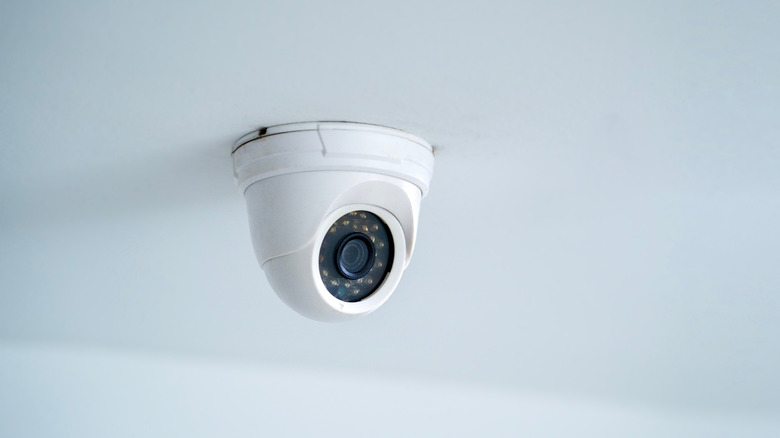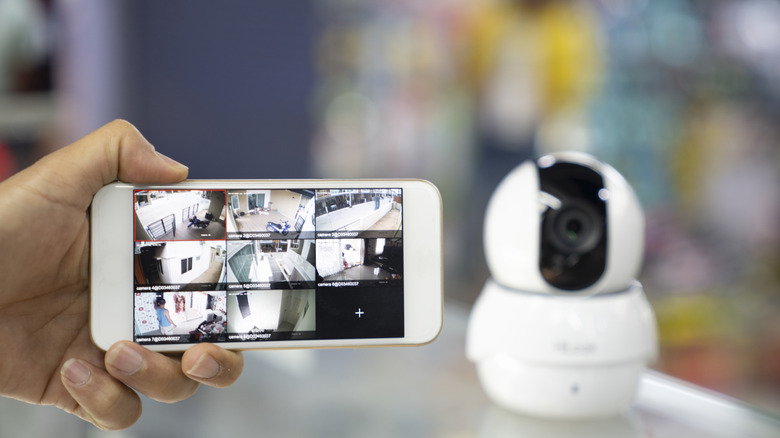How Much Electricity Do Home Security Cameras Use?
Home security cameras aren't energy hogs. Most wired models use between 4 and 15 watts, depending on resolution, features, and whether they run 24/7 or only on motion detection. Generally, wireless models also fall within the same range. The Tapo 2K wireless camera uses 9 watts. Lower-power wireless cameras with battery packs often stay under 5 watts but need to recharge their batteries or stay plugged in occasionally. Recharging a 20,000 mAh battery every few days adds up, albeit slowly.
You can find a camera's power ratings on the product's website, like Reolink's RLC 810A (which uses less than 12W), or in the user manual supplied with the camera. You can then use that to calculate the unit cost for your system. For example, five 6-watt cameras running nonstop would use 0.72 kWh/day, or around $3.50 per month in electricity at the national average rate. You can also use an online electricity calculator to calculate the cost.
Recorders and accessories also use electricity
Cameras alone don't tell the full story. If you use a wired system, electricity use comes from more than just the cameras. DVRs and NVRs, the brains behind many systems, are always on. A DVR (Digital Video Recorder) works with analog cameras, converting video to digital for storage. It uses coaxial cables and is cost-effective. An NVR (Network Video Recorder), on the other hand, works with IP cameras, receiving already-digitized video via Ethernet or Wi-Fi.
Some models from brands like Hikvision or Dahua can draw up to 40–60 watts on their own. Multiply that by 24 hours, and you're looking at 1.4 kWh per day or roughly $6.80 per month for the recorder alone. Then come the accessories. PoE switches can add power draw, too. Add in Wi-Fi extenders, storage drives, or security lighting, and your system's total consumption starts to look less negligible. Battery-powered cameras shift the power use away from the wall, but you're still using electricity to recharge them, either from an outlet or a solar panel.
Cutting power usage without compromising safety
If your goal is lower energy bills, you've got options. First, cut down on continuous recording. Set your system to motion-triggered recording. This simple change alone can slash energy consumption, especially if you're using power-hungry NVRs and full-resolution recording. Second, pick your hardware wisely. Lower-wattage IP cameras and smart battery models are available from brands like Reolink and Tapo. Cameras that consume under 5 watts and enter sleep mode when idle make a big difference over time.
Next, think about your recorder. If your NVR is overkill for a small setup, consider downsizing or switching to cloud storage. Cloud cameras like Nest or Ring don't need a local recorder, which saves you watts round-the-clock. You could also consider choosing a solar-powered security camera. Several security cameras now come with solar panel kits that fully recharge internal batteries. Models like eufy Security's SoloCam S220 require just three hours of sunlight a day to keep them going without ever tapping your electric grid.
Lastly, optimize placement. Don't install redundant cameras or floodlights where you don't need them. Review your system every few months and shut off gear that's not contributing meaningfully to your safety. Also, be sure to avoid these common mistakes people make when installing security cameras. Smart choices (not fewer devices) are the key to keeping your home secure without driving up your energy bill.


